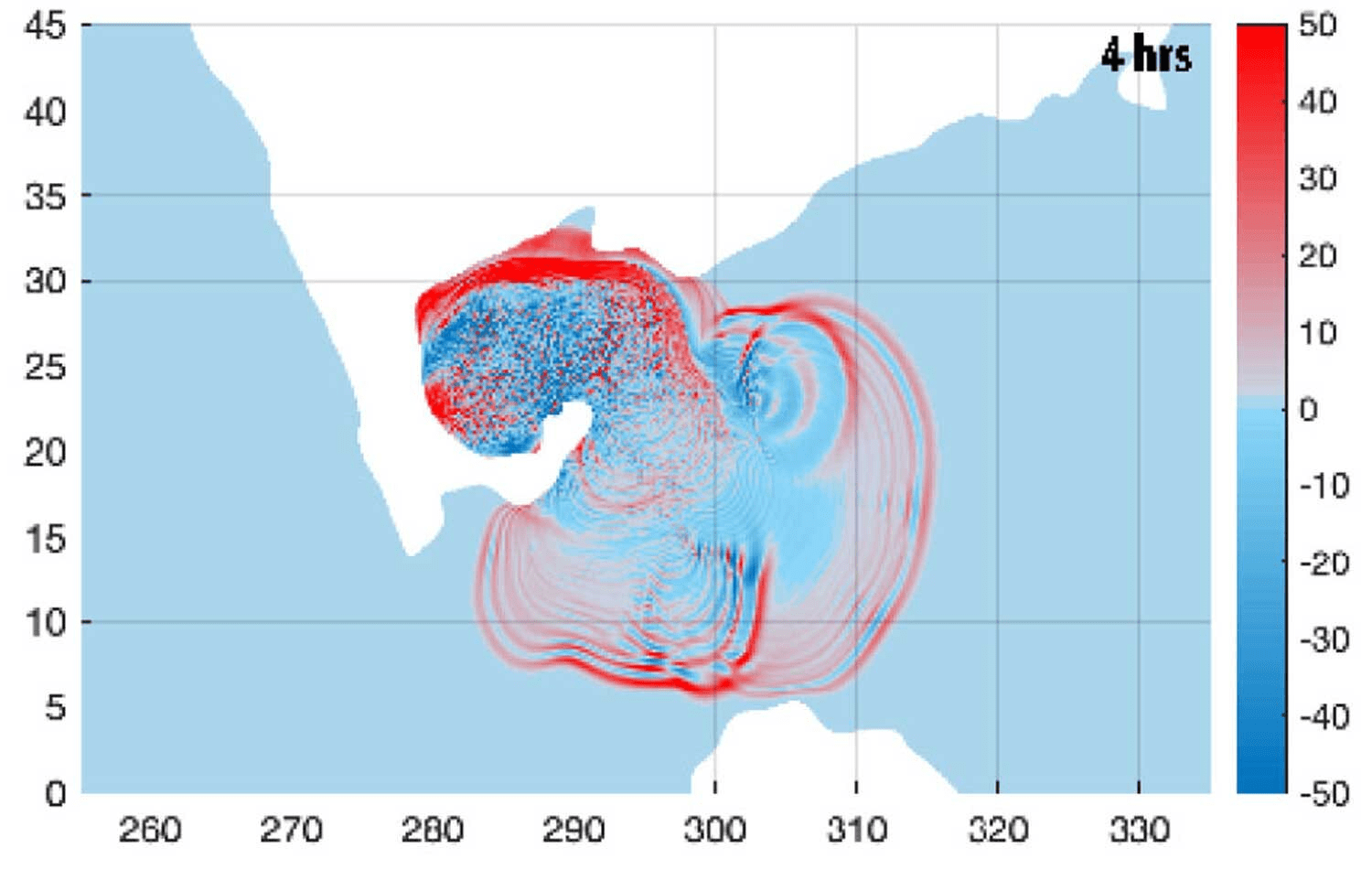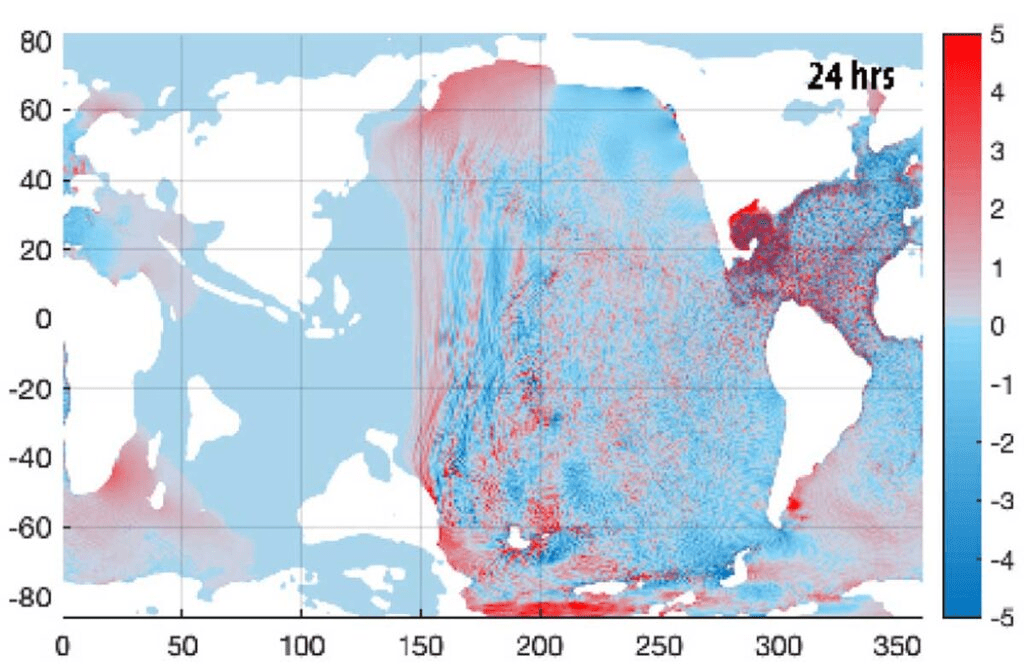Tsunamis that followed the Chicxulub impact 66 million years ago were probably not the main reason for the dinosaurs’ demise, with soot from fires having more effect. Nevertheless, they were powerful enough to leave marks on the bottom of the deep ocean half a world away that we can still see today.
University of Michigan master’s student Molly Range and Dr Brandon Johnson of Purdue University conducted modeling to estimate the size of the waves throughout the planet. Leaving coastal flooding to a future paper, they focused on open oceans. AGU Advances carries their results, along with an analysis of the geological record that confirms its accuracy.
“This tsunami was strong enough to disturb and erode sediments in ocean basins halfway around the globe, leaving either a gap in the sedimentary records or a jumble of older sediments,” Range said in a statement.
Range calculated the tsunami had a similar wavelength to the Boxing Day 2004 Indian Ocean tsunami which killed almost a quarter of a million people, but started with 30,000 times the energy. Within an hour much of this energy escaped the Gulf of Mexico to flow east and northeast towards Africa and Europe – then much closer.

Wave height in meters four hours after the impact. Image Credit: Range et al. in AGU Advances, 2022
A lot of the energy also went southeast. Today that would see it run up against central America, but at the time it flowed through the passageway between the two American continents and into the South Pacific. Even at the seabed, the currents in those directions were greater than 20 centimeters per second (0.4 miles per hour), enough to erode the finer sediments.
To test Range’s work her co-authors studied marine sediments in 120 deep sea cores on either side of the K-Pg boundary, laid down shortly before and after the impact.
Naturally, sediments deposited more recently were undisturbed – nothing remotely as big having scoured the sea floor since. On the other hand, late Cretaceous sediments were completely missing in the Gulf of Mexico and usually absent in neighboring oceans.
The tsunamis took 48 hours to encircle the globe, but oceans shielded by continents escaped their full force. The waves that bent around the land and into the North Pacific or South Atlantic, for example, were not enough to disturb the deep seabed, but speeds increased close to shorelines thanks to the way tsunamis respond to shallower water.
None of the Mediterranean’s sediments from that time were interrupted, and most of those from the North Pacific and South Atlantic were similarly intact. Meanwhile, the North Atlantic and South Pacific sedimentary records show major jumps skipping the late Cretaceous.
Without Range’s modeling, New Zealand might have been thought to be safe, being 12,000 kilometers (7,500 miles) from the crater. Indeed, when geologists noticed gaps in the sedimentary record off both the North and South Islands they attributed them to localized events caused by the islands’ tectonic activity.
Range, however, said, “We feel these deposits are recording the effects of the impact tsunami, and this is perhaps the most telling confirmation of the global significance of this event.”

Twenty four hours later waves were still sloshing around the Gulf of Mexico, and oddly concentrating in some other locations.Image Credit: Range et al. in AGU Advances, 2022
Modeling requires choices, and the authors picked a 14-kilometer (8.7 miles) wide asteroid traveling 12 km/s (27,000 mph). These are consistent with the 100-kilometer-wide (62-mile) crater we see today at the Yucatan impact site, but other combinations also fit with what we know.
In this scenario, waves reached 4.5 kilometers (2.8 miles) high. After using one program to model the chaotic initial response the authors fed the output at the 10-minute mark into two tsunami-propagation models, which use different methods but produced almost identical results.
The study is published in AGU Advances (open access).
Source Link: Dinosaur-Killing Impact Sent Tsunamis Reaching Over 4 Kilometers Around The World